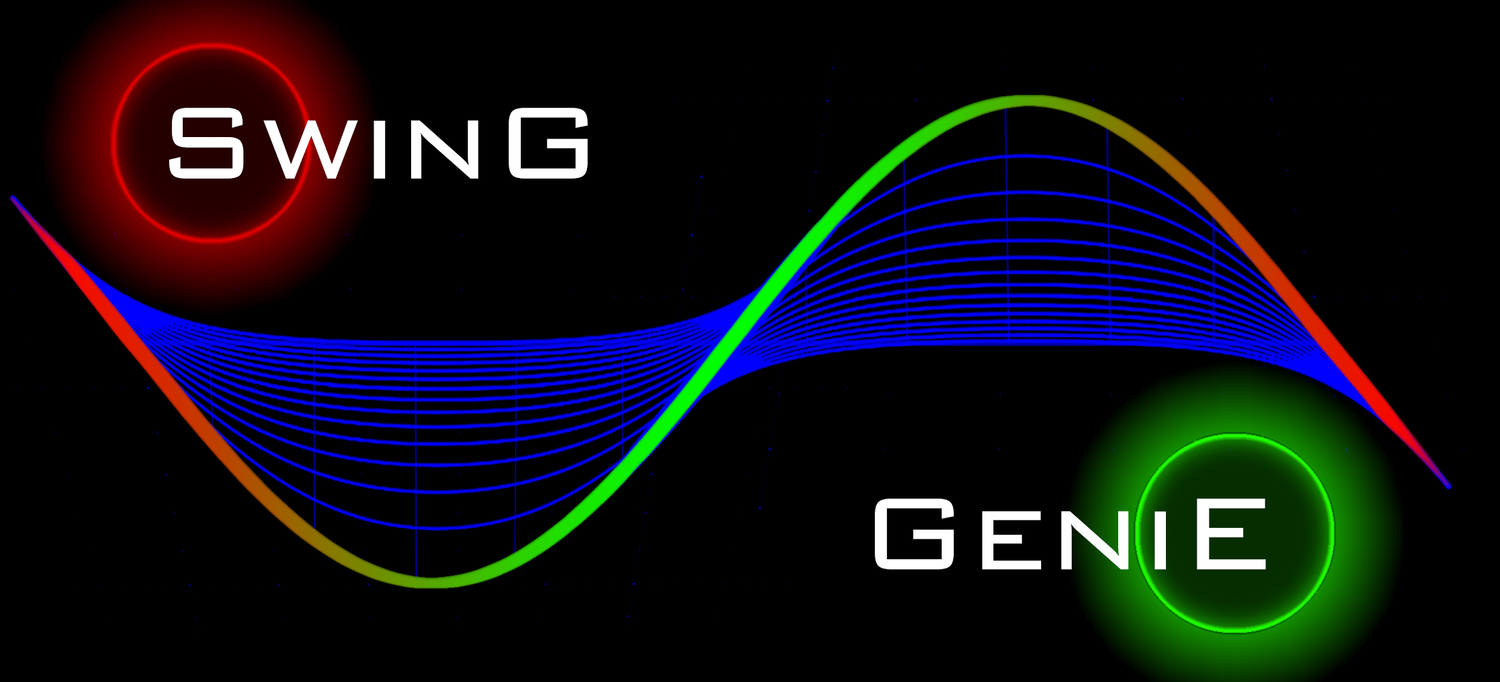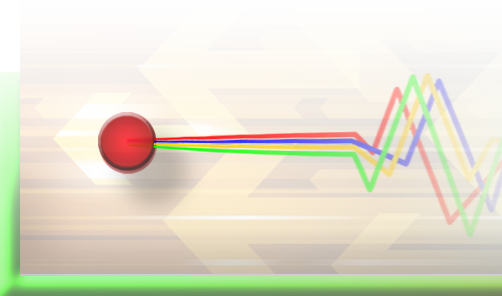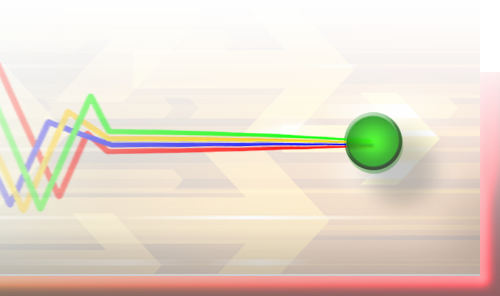The primary purpose of the dots is to provide a technical indication of the likelihood that the current trend will continue. The likelihood of the trend continuing and next dot being the same color depends upon the proximity of the current candle to support and resistance as well as candle size, closing score, percentage change and volume. Finally multiple moving averages are utilized to determine if the price is remaining within an envelope or is signaling a statistical exception that the trader should be aware of. One counter color dot and you want to watch your trade very closely. Two and you want exit or at a minimum, prepare to exit. Three get out of Dodge or reverse your trade direction.
The dot system utilized in Stock Dot Genie consists of an inner dot and outer ring. The two combined provide definitive technical feedback to the trader without the need to study or understand candlestick analysis or the finer points of technical analysis.
The DOT in Stock Dot Genie produces a simple and intuitive indicator that is superimposed over the candles. The core of each DOT has only two colors, red or green. Two distinct calculations are utilized to produce the core dot’s color depending upon the candle's proximity to support or resistance. When the stock has touched support or resistance and reversed direction, a very short-term, weighted, center-of-gravity calculation is utilized for the next three (3) trading bars. This calculation is referred to as the Primary Dot Calculation or (PDC). The PDC's color is derived by calculating and comparing the center-weighted position of each candle's real body and determining what this relationship is to the previous candle. Simply, If todays weighted dot calculation has a higher value than the calculation of the prior dot's value, the current dot's core is painted green (A in top graphic, 1-4 above). If it has a smaller value the core is painted red (B in top graphic, 5-8 above). This very fast and reactive calculation is utilized only as a turning-point bridge at the point in the cycle where moving averages are the least accurate. A Master Moving Average Envelope (MMAE) is utilized at all other times to generate the primary dot's core color. Please visit the MMAE link above for a complete explanation of how this dynamic moving average is calculated.
The Green Outer Ring (A in top graphic, 2 and 7 on the left) indicates that the Candle Body Size, the Absolute Change in the Closing Price and the volume are all greater today than the average of the same values for the last 5 days.
The Red outer rings (B in graphic at top and 3 and 6 on the left) indicate that the Candle Body Size, the Absolute Change in the Closing Price and the volume are all smaller today than the average of the same values for the last 5 days.
Gold outer rings (D in graphic at the top and 1 and 5 above-left) indicate that the rules to fulfill the requirements of the Green or Red Outer rings was not met and the trading action was within the normal trading range of this equity.
The dark blue outer ring (C in top graphic, 4 and 8 on the above-left) monitors Volume using a Center of Gravity indicator for an 8 day period,(COG8V). If COG8V is 1.61803398875 times greater than a smoothed moving average of the same indicator for the previous 28 days, then the background of all indicators is painted dark blue and the outer rind of the dot is painted dark blue as well. The blue outer ring will override all other outer rings. When volume spikes there is nothing more important than finding out why! This is why the Turning Point Volume indicator is a dominate presence throughout the platform.
Turning Point and Continuation arrows indicate that the the price has moved away from either the support or resistance lines. When this occurs SDG draws an arrow indicating the algorithms interpretation of either a continuation of the previous direction or a Turning Point. Both are possible entry points. The two arrows are calculated from the weighted center point of the last bar that touched the support or resistance lines. The length of the arrows are determined by calculating the percentage difference between this previous bar still touching a support or resistance line and first bar that initiates a reversal. The longer the candles, the stronger the signal strength and reliability of it projection as an entry or exit point. If the second candle is smaller than the first it may indicate some weakness in the momentum behind the move. If there is no second arrow the price action is not indicating an entry or exit point.
SDG's dot system, when combined with the arrows, guide new and experienced traders at the critical junctures of support and resistance.
















